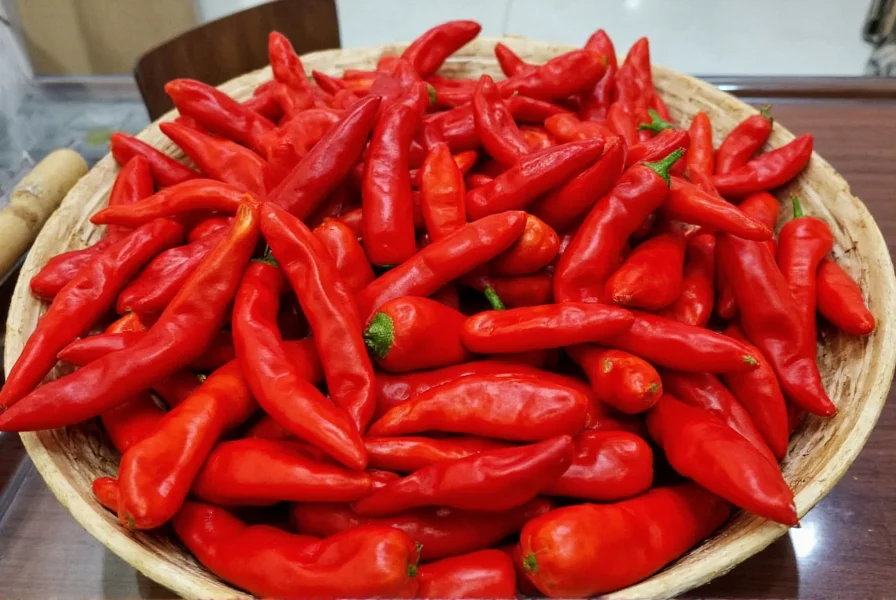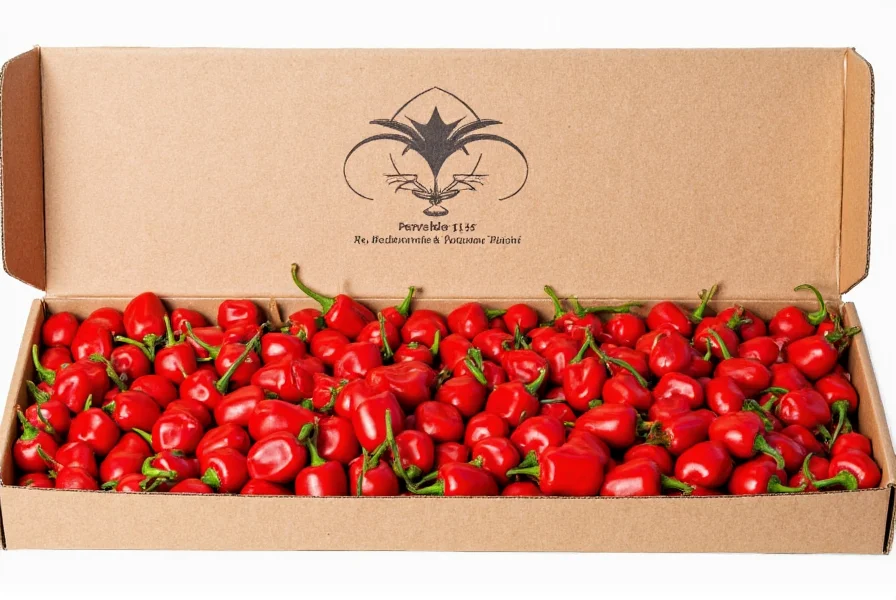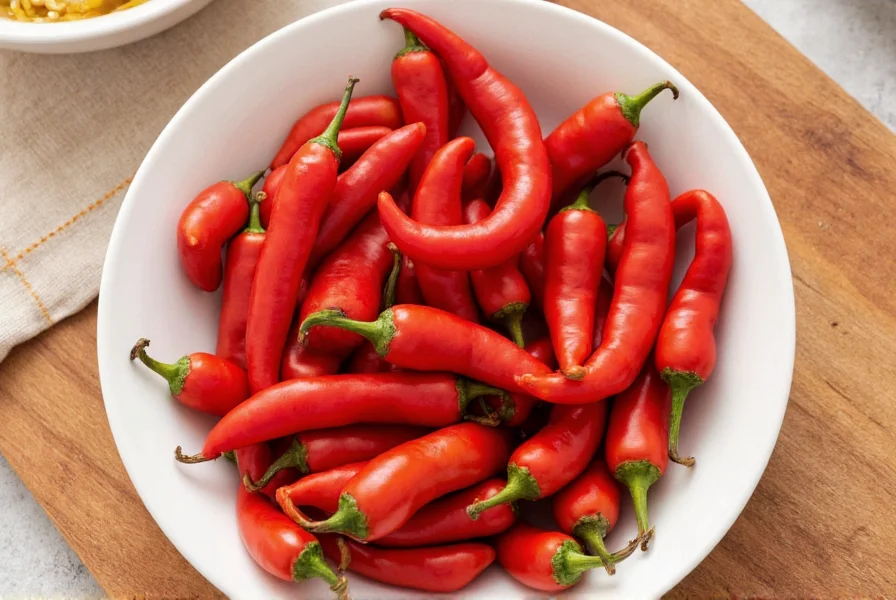Paprika Padrón represents a specialized culinary ingredient that bridges the gap between traditional Spanish Padrón peppers and conventional paprika. While most paprika derives from sweet or hot varieties of Capsicum annuum, Paprika Padrón specifically utilizes the dried form of the famous Galician Padrón peppers (var. angulosus), creating a product with distinctive characteristics that appeal to discerning cooks and food enthusiasts.
Understanding Paprika Padrón's Origins
The Padrón pepper variety originated in the municipality of Padrón in Galicia, Spain, where monks first cultivated them centuries ago. These small, thin-walled peppers gained fame through the Spanish saying "Os pementós de Padrón, uns pican e outros non" ("Padrón peppers: some are hot, some are not"). When producers began drying and grinding these peppers into powder, they created Paprika Padrón—a product that maintains the unpredictable heat characteristic of fresh Padrón peppers but in a convenient, shelf-stable form.
Flavor Profile and Heat Characteristics
Unlike standard sweet paprika which offers consistent mildness, Paprika Padrón delivers a more complex flavor experience:
- Heat variability: Ranges from mild (1,000 SHU) to moderately hot (5,000 SHU), reflecting the "some are hot" nature of fresh Padrón peppers
- Flavor notes: Earthy base with subtle grassy undertones and a hint of natural sweetness
- Aroma: Distinctly fresh and green compared to the roasted notes of smoked paprika
- Color: Vibrant red-orange, slightly less intense than Hungarian sweet paprika
| Characteristic | Paprika Padrón | Standard Sweet Paprika | Smoked Paprika |
|---|---|---|---|
| Primary Pepper Source | Padrón peppers | Sweet red peppers | Pimientos de Padrón or similar |
| Heat Level | Variable (mild to medium) | Consistently mild | Mild to medium |
| Flavor Profile | Earthy, grassy, slightly sweet | Sweet, bell pepper-like | Smoky, robust |
| Best Culinary Uses | Seafood, potato dishes, Spanish tortillas | Goulash, deviled eggs, rice dishes | Paprika chicken, chorizo, bean dishes |
Culinary Applications of Paprika Padrón
Chefs and home cooks use Paprika Padrón to add nuanced heat and authentic Spanish flavor to various dishes. Unlike regular paprika which primarily contributes color and mild sweetness, Paprika Padrón brings both visual appeal and distinctive flavor complexity. When cooking with this specialty spice, consider these applications:
For traditional Spanish pimientos de Padrón preparation, many chefs now use Paprika Padrón as a finishing spice after pan-frying fresh peppers in olive oil and sea salt. The ground spice enhances the natural flavor while providing consistent heat distribution—a solution to the unpredictable heat of fresh Padrón peppers where "one in ten" might be unexpectedly hot.
When substituting Paprika Padrón in recipes calling for regular paprika, use 25-30% less due to its potentially higher heat level. This adjustment preserves the intended flavor balance while incorporating the unique characteristics of Padrón-based spice. The best applications for Paprika Padrón include:
- Seafood paella and fish stews
- Potato dishes like tortilla española
- Marinades for chicken and pork
- Enhancing tomato-based sauces
- Finishing spice for roasted vegetables

Sourcing and Storage Recommendations
Finding authentic Paprika Padrón requires attention to labeling details. Look for products specifying "made from Padrón peppers" rather than generic "Spanish paprika." Premium versions often indicate their Galician origin or include Denominación de Origen protection status. When evaluating potential purchases, check for:
- Deep red-orange color (avoid dull or brownish tones)
- Fresh, clean aroma (stale paprika loses potency)
- Harvest or production date (paprika maintains best flavor within 6-12 months)
- Opaque packaging (light degrades paprika quality)
Proper storage extends Paprika Padrón's shelf life and preserves its distinctive flavor. Keep the spice in an airtight container away from heat and light. Refrigeration isn't necessary but can prolong freshness for up to 18 months. Never store near the stove or in clear containers exposed to kitchen lighting.
Creating Balanced Dishes with Paprika Padrón
Understanding how to incorporate Paprika Padrón into recipes prevents overpowering other ingredients. The variable heat level requires careful measurement, especially for those unfamiliar with the spice. Professional chefs recommend:
- Start with half the amount you'd use of regular paprika
- Add incrementally while tasting
- Pair with ingredients that complement its earthy notes (olives, garlic, olive oil)
- Avoid high-heat cooking that can burn the delicate spice
- Use as a finishing touch for maximum flavor impact
For home cooks exploring Spanish cuisine, Paprika Padrón offers an authentic way to recreate traditional Galician flavors without requiring access to fresh Padrón peppers, which remain seasonal and geographically limited outside of Spain.

Common Misconceptions About Paprika Padrón
Several misunderstandings surround this specialty spice. First, Paprika Padrón isn't simply ground fresh Padrón peppers—it undergoes specific drying processes that concentrate flavors and alter heat characteristics. Second, it shouldn't be confused with "pimentón de la Vera," which refers to smoked paprika from a different Spanish region.
Many consumers mistakenly believe all Spanish paprika is the same, but regional variations create distinct products. Authentic Paprika Padrón maintains the spirit of the original Galician peppers while offering the convenience and consistency that ground spices provide. Understanding these distinctions helps cooks select the right product for their culinary needs.
Frequently Asked Questions
What makes Paprika Padrón different from regular paprika?
Paprika Padrón is made specifically from dried Padrón peppers, which creates a more variable heat level and distinct earthy, grassy flavor profile compared to regular paprika that typically uses sweeter pepper varieties. While standard paprika offers consistent mildness, Paprika Padrón maintains the 'some are hot, some are not' characteristic of fresh Padrón peppers.
Can I substitute Paprika Padrón for regular paprika in recipes?
Yes, but with caution. Use 25-30% less Paprika Padrón than regular paprika due to its potentially higher heat level. Start with a smaller amount, taste, and adjust as needed. Paprika Padrón works best in dishes where its distinctive earthy flavor complements other ingredients, such as seafood, potato dishes, and Spanish tortillas.
How should I store Paprika Padrón to maintain freshness?
Store Paprika Padrón in an airtight container away from heat, light, and moisture. Opaque containers in a cool, dark cupboard work best. Properly stored, it maintains optimal flavor for 6-12 months. Refrigeration can extend freshness up to 18 months but isn't necessary. Avoid storing near the stove or in clear containers exposed to light.
Is Paprika Padrón the same as smoked paprika?
No, Paprika Padrón is not smoked paprika. While both may originate from Spanish peppers, Paprika Padrón is made from dried Padrón peppers without smoking, resulting in a fresher, grassier flavor. Smoked paprika (pimentón) undergoes a smoking process that creates distinctive smoky notes. The two spices serve different culinary purposes and aren't direct substitutes.
Why is Paprika Padrón more expensive than regular paprika?
Paprika Padrón typically costs more due to the specialized cultivation of Padrón peppers, limited growing regions in Galicia, Spain, and smaller production volumes compared to mainstream paprika varieties. The traditional drying methods and protected designation of origin status for authentic products also contribute to higher pricing.











 浙公网安备
33010002000092号
浙公网安备
33010002000092号 浙B2-20120091-4
浙B2-20120091-4